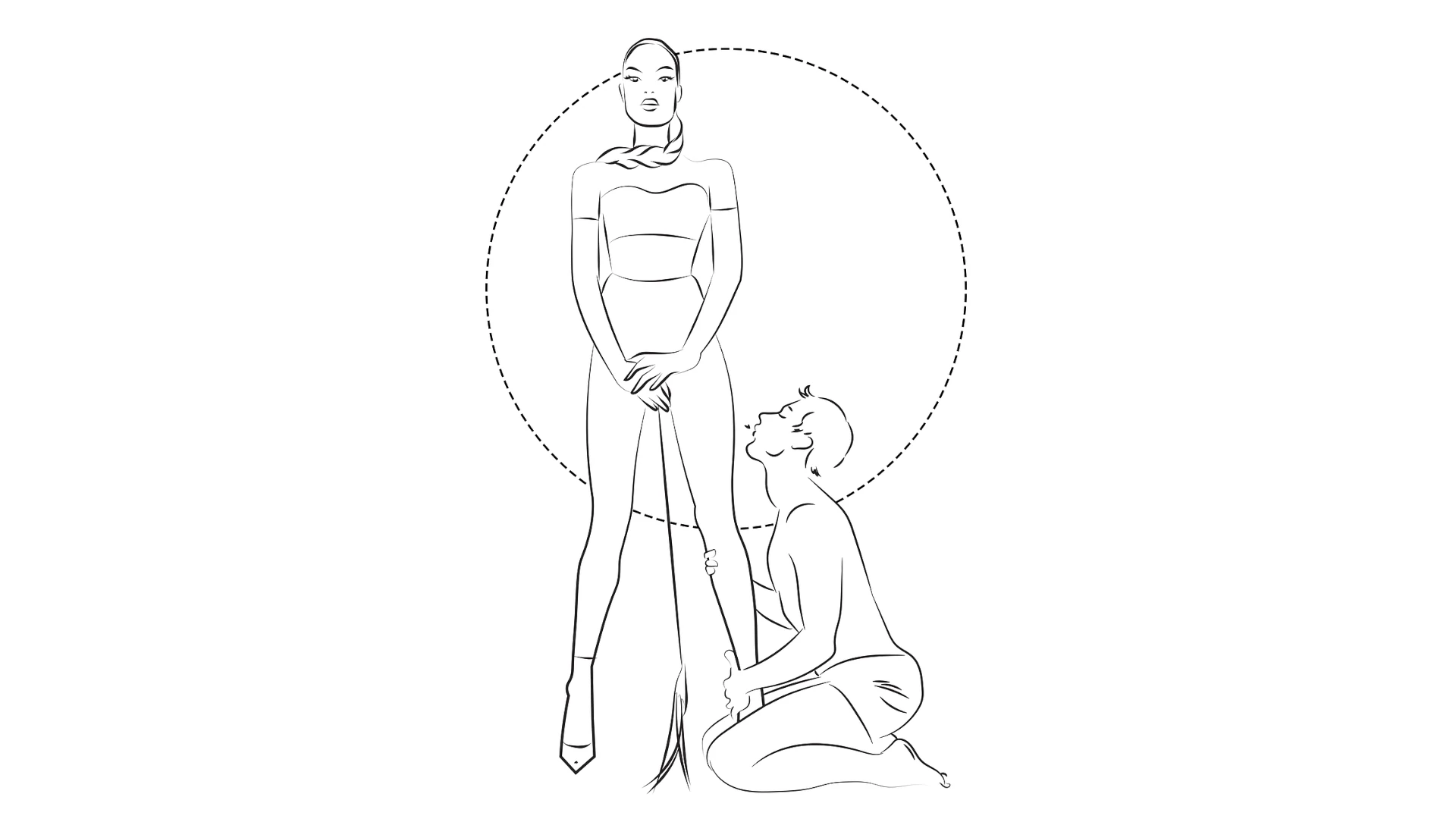Embarking on a Female Led Relationship (FLR) has been one of the most transformative experiences of my life. A FLR, at its core, is a relationship where the woman assumes the dominant role, and the man takes on a more submissive and supportive position. For me, the journey into this dynamic brought both incredible joy and profound challenges, with the most difficult hurdle being the cultivation of unconditional obedience.
The decision to enter a FLR came after extensive discussions with my wife. We were both intrigued by the idea of shifting traditional relationship dynamics and exploring power exchange in our personal lives. My wife, whom I’ll refer to as Ute, naturally possessed leadership qualities that made the prospect of her assuming the dominant role quite appealing. Conversely, I found the idea of submission both exciting and intimidating, recognizing that it would require a significant adjustment in mindset and behavior.
Unconditional obedience in our opinion is a cornerstone of a FLR, where the submissive partner (in this case, me) follows the directives of the dominant partner without hesitation or resistance. This concept was easier to understand in theory than to practice. The idea of relinquishing control and trusting Ute’s judgment completely was daunting. It required a deep level of trust and a willingness to let go of ego and pride.
The most challenging aspect of our journey was learning that unconditional obedience. As someone accustomed to making my own decisions, relinquishing control was incredibly difficult. I had to learn to trust Ute’s decisions and understand that her leadership was in our mutual best interest. Ute´s demand of Obedience often clashed with my sense of ego and pride. There were moments when I struggled with feelings of resentment or frustration, questioning my own worth and significance in the relationship. Sometimes I needed to express my concerns and feelings without appearing defiant or challenging Ute’s authority. This required a delicate balance and a lot of patience. Overcoming my internal resistance to obedience was an ongoing battle. It took time to rewire my mindset and embrace the submissive role fully.
To help me embrace my role and ensure consistency in obedience, Ute implemented various methods of reinforcement and punishment. These methods were always consensual, and we had clear boundaries and safe words to ensure that the dynamic remained healthy and respectful. Positive reinforcement was a key strategy Ute used to encourage obedience. Praise, affection, and rewards for good behavior helped reinforce my commitment to the dynamic. This could be anything from verbal affirmation to small gifts or privileges. Positive reinforcement made me feel valued and appreciated, which motivated me to continue adhering to our agreed-upon roles. Establishing a routine and structure in our daily lives helped me stay focused and aligned with Ute’s expectations. Having a clear schedule and set tasks made it easier to anticipate and fulfill my responsibilities. This structured approach reduced uncertainty and provided a sense of stability in our relationship.
Punishments were used sparingly but effectively to correct disobedience. Sometimes, a stern talking-to was enough to correct my behavior. Ute’s firm tone and clear expectations served as a powerful reminder of my role. Verbal corrections were immediate and direct, addressing the issue at hand and providing clear guidance on how to improve. One of the more common forms of punishment was the use of time-outs. When I failed to obey or acted out of line, Ute would instruct me to sit in silence and reflect on my behavior. These time-outs varied in length, from a few minutes to an a few hours, depending on the severity of my infraction. The purpose was to give me time to think about my actions and their impact on our relationship. Additional unpleasant chores or tasks were assigned as another form of punishment. This not only corrected behavior but also contributed to the household. Ute would assign me tasks like extra cleaning, organizing, or running errands. These chores served as a reminder of my role and the importance of contributing to our shared responsibilities.
Privileges such as leisure time, watching TV, or engaging in hobbies were temporarily revoked as a consequence of disobedience. Losing these privileges was a powerful deterrent, as it directly impacted my ability to relax and enjoy my free time. And while used very rarely, physical punishments like spanking were sometimes employed. These were always preceded by clear communication and consent. Physical punishments were administered in a controlled and respectful manner, serving as a last resort when other methods proved ineffective. The physical aspect of these punishments underscored the seriousness of my disobedience and the need for immediate correction.
The process of submitting to Ute’s authority and adhering to our FLR dynamic had a profound emotional and psychological impact on me. Initially, the punishments and the need for unconditional obedience triggered feelings of resistance and frustration. However, over time, I began to see the value in our structured relationship. The consistent enforcement of rules and expectations built a strong foundation of trust between us. Knowing that Ute would follow through on punishments and rewards alike created a sense of security and reliability.
Growing into my submissive role required a great deal of introspection and personal growth. I learned to identify and address my ego-driven reactions, becoming more self-aware and empathetic in the process. Writing about my experiences and reflecting on my behavior helped me internalize the lessons learned from each instance of disobedience. Ute would often read my journal entries and provide feedback. This process of self-reflection and communication fostered a deeper understanding of my actions and their consequences.
Implementing a Female Led Relationship has been a profound journey of self-discovery and growth. Learning to obey unconditionally was the most challenging aspect, requiring immense trust, patience, and introspection. Through the use of various reinforcement and punishment methods, I gradually embraced my role and found joy in submission. Our FLR has strengthened our bond, deepened our connection, and brought a unique sense of balance and harmony to our lives. For anyone considering a FLR, my advice is to approach it with an open mind, clear communication, and a commitment to mutual respect. The journey may be challenging, but the rewards of a balanced and fulfilling relationship are well worth the effort.





Some of these FLR sound more like a typical D/s (BDSM) styled relationship. I’ve been in a FLR with my wife for the past 5 years and she has never had to give me spankings, or some form of physical punishment. or has ever asked me to wear a CBT device. I realize everyone determines what works best for their respective relationships, but there seems to be an odd sentiment in assuming FLR automatically places men in CBT devices. Many submissive men are unaware that many, and I’d say actually MOST powerful women that are successful would never be attracted to submissive men.
They are attracted to ALPHA men who committed to a loving union in which the woman’s protection, comfort, happiness, satisfaction and progress are the primary focus in the relationship. She sets specific boundaries, expectations and standards for the relationship and her partner agrees to do whatever it takes to ensure her happiness. She makes the final decision in everything because he admires and respects her choices.
Some submissive men are so desperate for a Domme, they are willing to mix the typical D/s (BDSM) with FLR. But they are not the same, since most powerful women involved in FLR are not attracted to submissive men. Such women would cringe at the fact her man wants to crawl at her feet like a dog.
Hi Mike, thanks for your sharing your perspective. Certainly not all FLRs include chastity devices, physical punishment, etc. FLR can take many forms. I sent you an email, hope to hear back from you, thanks.
I agree with you, Mike . Successful women love successful alpha men who submit to them only. That submission means something special and it’s a sign of a big devotion. They don’t seek some submissive loser getting punched daily out in the world and at home. That’s not an attractive power exchange because he is pathetic in his vanilla life and kink life. You are not taking any power from him because he has none lol
yes, many people on this site seem to be very confused what an FLR even is. Is has nothing to do with BDSM. It has been a very frustrating experience to hear from people who have the two things mixed up.
Sorry Rowan, You are one of many on here that is attempting to project your idea of what an FLR is onto the rest of the members. So much so that you seem angry that others have a different type of FLR, or even just fantasized about their ideal FLR. Many FLR involve Bondage, many FLR involve Disipline, In many FLR the Female may be a Sadist, and certainly many males in a FLR are masochist. You are may be in, or want to be in, a tradition Leave it to Beaver household, only with the Female making decisions for the household.
So what the site is about certainly is not having people project their idea of what a Female Lead Relationship is.
You might want to read some of the other information the Admin has provided about FLR. Exactly like a MLR, each is different.
My challenge as a male is finding and making space for the female to truly lead and feel naturally comfortable.
Sorry, guys, but you can’t assume there’s exactly one formula for a successful FLR. I know from experience that there are naturally dominant women out there who are quite turned off by Alpha males and want instead a man whose submission is born of reflection and the realization that that’s who he actually is, rather than of a desire to compensate for the way they live their lives outside the home. They find the former authentic and the latter inauthentic, a form of role-playing rather than a journey of mutual self-discovery.
You’re welcome to seek what you seek and do what works for you and your partner, but don’t be thinking you have any right to dictate what should work for anyone else. You don’t.
I agree with Zim. My wife is not into BDSM and she did not choose me because I am alpha outside the home. She is the Alpha and I submit to her. I was honest with her when we were dating. I like to be fem and submissive in a relationship. She liked that. Maybe other successful dominant women have different preferences but to say all successful dominant women are not attracted to submissive men is not correct.
Agree that a chastity device is not needed for a FLR. However I disagree that BDSM should not be mixed with FLR. In fact I believe that the most successful FLRs incorporate BDSM and kink into the relationship. Without it, it is no different than a traditional marriage except that the wife is leading instead of the husband. Men want kink and sex and the wife who strategically uses it to motivate the husband makes her life better and makes her husband a happy submissive.
The level of discipline described (unconditional obedience) seems akin to military discipline. Which suggests an alternative term to “submissive”-the military term “subordinate.” The husband certainly doesn’t sound like a submissive in the BDSM sense.
Spankings keep the male humble and subservient. Especially if the man hates them. Punishments should be seldom but they must be unpleasant, or other consequences that the man dislikes a lot.
the obedient husband really accepts all to satisfy his dominant wife but it is better that she makes that gradually.
she teach and train him in steps till she reached to the step that she wants
that is my opinionn as a sub
To elaborate on my previous post, the relationship described seems to be the stricter version of a level 3. The man seems to be a “1” in terms of couple authority. Perhaps his position might be described as a Servant Mate? Not a Slave, though; again, the military analogy seems to fit.